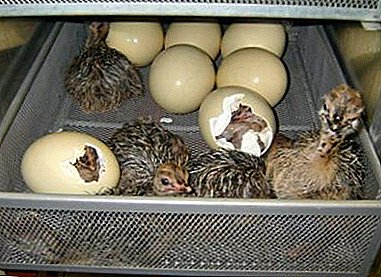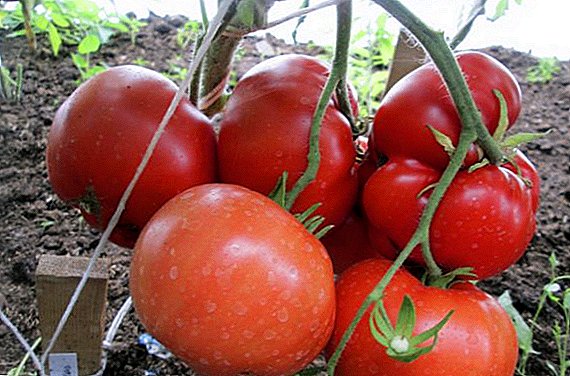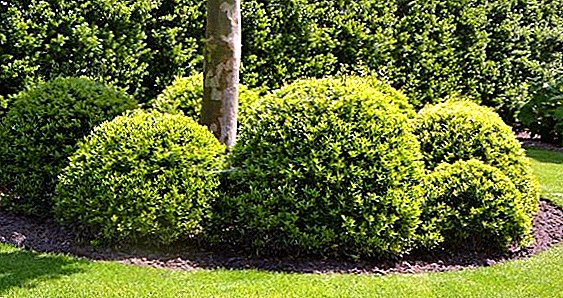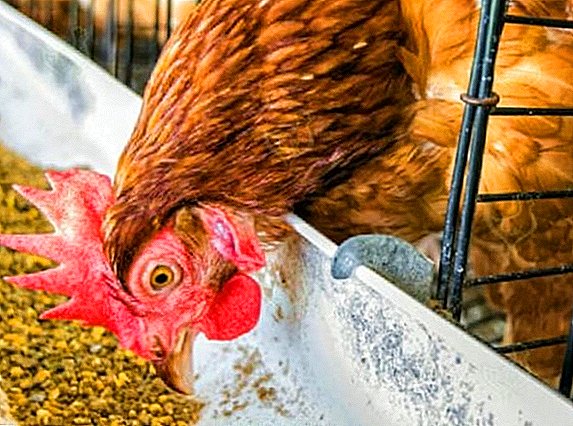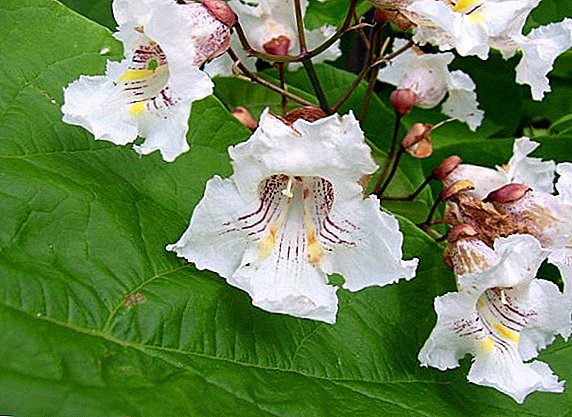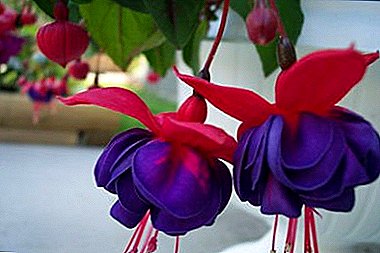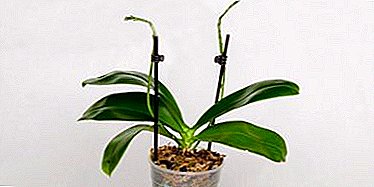
The moment when the orchid blooms is the most expected for all owners of this plant. And this is not surprising: a cascade of colors of the original form and bright colors make any interior interesting and modern.
Therefore, many flower growers with particular trepidation relate to the process of producing and developing the arrow of the orchid. In the article you can read how to determine that the arrow or the root has released the flower, read the description of the flower spike and see the photo.
What it is?
The arrow is an shoot (peduncle), going up from the base of the plant, on which buds and flowers are formed.
What does it look like?
The arrow looks like a long stem. (under favorable conditions, it can reach a length of 80-100 cm) of a cone-shaped green color, without flowers, which grows most often above the place of the previous flowering. The arrow is not smooth, but has irregularities - the places where the buds of the plant are formed: sleeping and flower. Buds and flowers of an orchid form from flower flowers, and from sleeping ones a side arrow or a baby may appear.
A photo
Next you can see the photo on which you can see the arrow of the orchid:



What is different from other parts of the plant?
Often beginner flower growers cannot determine whether an orchid has released: a root or an arrow. Indeed, to accurately determine the part of the plant, especially at first, only a florist with years of experience can do it. But after some time, when the process reaches a length of 1 cm, it will not be difficult to do this.
The main difference is that the tip of the peduncle is sharp and of the same color as the shoot, and the root is rounded and pinkish. The shape can also be used to distinguish another part of the plant, which is also often confused with the arrow, the radical baby. It has the shape of a boat.
The spine immediately after its appearance begins to look down (stretches to the soil and nutrients in it), and the arrow - up (stretches to the light), as well as the radical baby. The root is smooth, and the arrow contains "scales." The root grows most often from the neck of the plant, the shoot - between the leaf plates.
We offer to watch a video on how to distinguish the peduncle from other parts of the orchid:
Role in plant life
The orchid arrow performs a reproductive function. On it children are most often formed - small copies of the orchid itself. After they release a couple of leaves and 3 - 4 spines, they can be rooted.
Besides peduncle participates in the appearance and development of flowers and buds, nourishes them with water and nutrients, thereby continuing to perform the reproductive function. Each orchid flower contains a seed box in which seeds mature after pollination by insects. Orchid can be grown from seed, but it can occur either in the natural environment - the tropics, or in laboratories, as this process is long and whimsical.
How did the flower shoot?
 During the period of active growth of the roots and leaves of an orchid, a dormant phase begins, during which the plant releases an arrow. Most often this period is in autumn, but in good conditions the orchid can bloom several times a year.
During the period of active growth of the roots and leaves of an orchid, a dormant phase begins, during which the plant releases an arrow. Most often this period is in autumn, but in good conditions the orchid can bloom several times a year.
Orchid Escape released from the leaf bosomusually the lowest. Sinus leaf is the place where the orchid leaf comes into contact with its trunk. The arrow breaks through the sheet and aims upwards. The boom occurs under the influence of many factors: lighting, temperature, watering. If the orchid is not created favorable conditions, the formation and release of the flower stem will be impossible.
What to do during this process?
- Place a container with a flower in a well-lit place. For this fit windows of the south, south-east, south-west.
- If the light day lasts less than 12 hours, then the orchid should be placed under an additional light source (fluorescent lamp, phytolamp).
- Ensure systematic moderate watering at room temperature with distilled or boiled water.
- Continue to feed the plant if it was done before the release of the arrow.
As a top-dressing, usually used ready-made mineral fertilizers for orchids, containing phosphorus and potassium in the composition. They are sold in specialized stores. If fertilizing has not previously been done, then start with the release of the arrow is not worth it - the orchid can "stand still."
We offer to watch a video containing recommendations for the care of orchids that released flower spike:
What if the escape does not give?
- Arrange temperature difference. The difference between the thermometer in the night and daytime should be 5C - 7C. Such a drop can be achieved by putting a pot with an orchid on a heated balcony or terrace.
- Provide enough light for the plant. The required day length is 10 to 12 hours. In the cold season (autumn, winter) the flower must be illuminated by fitolampa.
- Provide proper watering. Orchid before flowering and with the release of the arrow requires moderate systematic watering. But it is important to remember the main principle: do not pour the roots! It is necessary to constantly monitor the state of the root system and substrate.
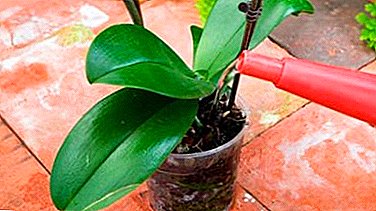 Monitor humidity levels in the room where the orchid. For the release of the switch, the optimum humidity should be 30% - 40%.
Monitor humidity levels in the room where the orchid. For the release of the switch, the optimum humidity should be 30% - 40%.- Provide feeding plants are fertilizers based on potassium and phosphorus: they have a beneficial effect on the formation of flower buds.
- Scare. If the above points have been fulfilled, and the orchid is not released, then it is recommended to arrange a stressful situation for her: reduce watering to a minimum and rearrange the pot to a cooler place.
Some florists use special chemicals that stimulate orchid blooms. "Epin" is very popular. They should be sprayed daily in the morning.
You can also water the plant, adding to the water 3 - 5 drops of the drug (details in the instructions).
We offer you to watch a video on why the orchid does not release the peduncle and what to do in this case:
Broken new arrow
- Do not leave a broken arrow on the plant, do not stick it together with adhesive tape, adhesive tape, do not pin it.
- Cut with sharp and sterile scissors above the sleeping bud by 1 - 2 cm. There is a high probability that a lateral peduncle will be formed from the sleeping kidney.
- If the peduncle is broken at the root, then it must be cut off completely, trying to leave a small stump 1 -2 cm high.
- Sprinkle with cinnamon or crushed activated charcoal.
- Broken arrow can be put into the water, periodically changing it. Orchid can begin to bloom in this way.
In order for such cases not to repeat, it is necessary to provide the plant with a habitat in which the probability of causing mechanical damage to the flower will be reduced to zero. Because plastic pots are not sufficiently resistant, it is advisable to put them in potsmore resistant: glass or ceramic.
Possible problems
 It often happens that the arrow is released, but does not develop further, but seems to freeze in place. Or another option is possible: the flower spike has grown, but has begun to dry out. The causes of these phenomena are directly related to the fulfillment of the basic requirements for the maintenance of orchids.
It often happens that the arrow is released, but does not develop further, but seems to freeze in place. Or another option is possible: the flower spike has grown, but has begun to dry out. The causes of these phenomena are directly related to the fulfillment of the basic requirements for the maintenance of orchids.
Among them:
- improper lighting;
- oversupply or lack of fertilizers;
- problems with the root system;
- excessive or insufficient watering;
- infectious diseases and pests;
- wrong temperature conditions.
How to care?
In order for the orchid to release the arrow and for a long time to please its flowering, it is necessary to provide it with comfortable living conditions. To do this:
- Maintain the temperature in the summer: + 22-25ºС, in winter + 16-18ºС.
- Place the pot in the sun, but not under the scorching rays. In the summer, a window is recommended pritenyat.
- Maintain humidity during the growing season within 50-60% of household humidifier, and for the release of the peduncle - 30% - 40%.
- Regularly arrange ventilation of the room.
- Water once a week, in the intervals the ground should dry completely. For release peduncle "dry" period can be extended.
- Use warm and purified water.
- Fertilize orchids with fertilizers containing potassium and phosphorus.
A real joy causes florist the moment of the appearance of the arrow of the orchid. But it is important to remember that the key to future successful flowering plants is compliance with the basic requirements for conditions of detention epiphyte, especially at a time when the plant is most vulnerable.


 Monitor humidity levels in the room where the orchid. For the release of the switch, the optimum humidity should be 30% - 40%.
Monitor humidity levels in the room where the orchid. For the release of the switch, the optimum humidity should be 30% - 40%.